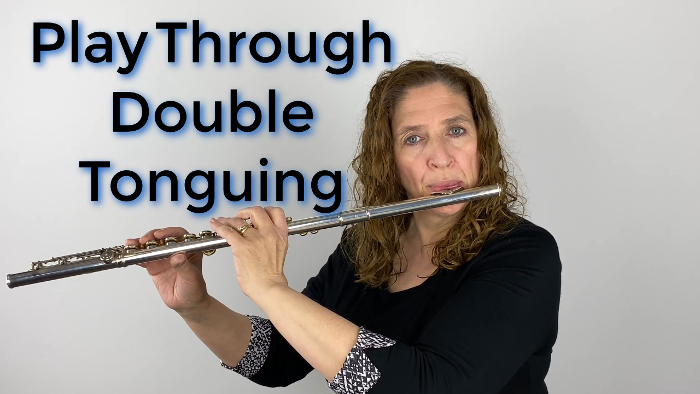Double tonguing can be the best thing to happen to your technique, or it can be the hindrance that keeps you from succeeding. It seems like an easy thing to do, but when done incorrectly, the fingers and tongue do not sync together.
One of the ways to clean up your double tonguing is to play through the tonguing. Often when double tonguing the air is chopped off. The tonguing then becomes very choppy, and it is tiring to do. When you learn to play through your double tonguing with your air and your support, then you free your tongue and fingers to move quickly.
The biggest problem I hear when people are double tonguing is this way of stopping the tongue as it moves between your ta and your ka. I call it the henpeck. Now there are other reasons why double tonguing can be kind of henpecking. But the tongue stopping the air is the biggest reason double tonguing does not sound effortlessly smooth.
This occurs because we do not play through the double tonguing. Playing through the double tonguing means you take your breath, add support (what I call air pressure) and then keep everything (throat, embouchure) open – as you double tongue. Make sure that you are continuously keep air pressure on the tongue. However, the tongue must remain light. Now it does not mean that I’m blowing extra air. Blowing harder and keeping air pressure are not the same thing. I still want to have total control over my air.
When I use a lot of support, I breathe from my stomach and my rib cage, and I expand them, and then tighten the muscles. I make sure that when I say ta-ka-ta-ka-ta without the flute, that air pressure is still present. Try it yourself. Remember that your tongue releases the air it does not stop the air. Now try it on the flute. Play one note and practice 5 doubles ta-ka-ta-ka-ta. Do the doubles flow easily, or do you let your flute playing change the way you say it without the flute?
Midsummer Night’s Dream is a fantastic piece to practice and learn double tonguing correctly. Most of the time when I hear students play Midsummer, they chop the tonguing completely. When that happens, the light flow of the music does not happen. It does not have that beautiful musical flow. One way to help practice double tonguing correctly is to practice the passage slurring first then double. When you double tongue, you want it to sound as if you were slurring. You want the same flow.
Practice your double tonguing. Keep it very light with an air stream flowing through. Keep the throat open, take that yawning breath and maintain air pressure so that you can stay steady.
Do you know a weird thing? Air pressure helps you hold on to that beat, so that your fingers do not rush. I do not know why it works. It just does. It really helps to hold on to that beat. You feel like air pressure or your support holds on to that beat, so that you do not rush. Then your fingers and your tongue do not fall out of sync.
So, hold on to that double tonguing by air pressure, open up your throat, and keep your tongue light. When you do, you will find your Midsummer Night’s Dream or your Mozart Concertos flow beautifully like the professional sound you’re going for.
Have fun!
DoctorFlute
Playing Through Your Double Tonguing on the Flute – FluteTips 127

